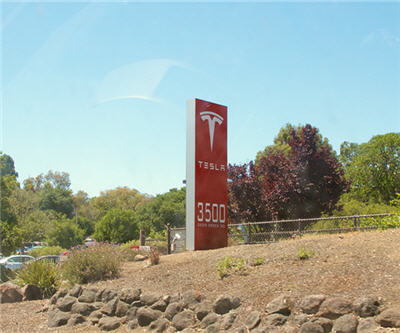
The graphite, lithium and cobalt industries are set for major demand surges as Tesla Motors prepares to break ground on its super-battery plant, the Gigafactory, next month.
The high-end EV manufacturer is looking to double the world’s battery output as it seeks to bring the production cost of battery packs down in a bid to spark mass EV uptake.
The company is aiming to begin construction on the Gigafactory in June 2014 with an old airfield in Reno, Nevada rumoured to be the favoured site.
One of the biggest impacts of the Gigafactory will be demand for the critical minerals that will fuel it.
Lithium, graphite and cobalt are all set to be key raw materials to make Tesla’s lithium-ion batteries, but the question remains whether the company can get the volumes and consistent quality it needs in time.
Below is an analysis on the potential volumes of critical minerals Tesla would need for a Gigafactory operating at capacity which is expected in 2020.
Graphite demand up 152%
Graphite will be the largest input raw material for Tesla. Should the company choose natural graphite, it would require as much as 126,000 tonnes of flake graphite each year in the form of 50,000 tonnes of the battery-grade material, spherical graphite.
This is an increase of 152% on today’s battery demand for the mineral. It equates to six new graphite mines on the basis of today’s 30,000 tpa mine size average and the yield of suitable material gained from the mine.
Graphite both natural and synthetic is used as the cathode in a battery.
China is the leading producer of flake graphite and the leading processor of battery grade spherical graphite today. But the country is aiming to consolidate operations which could see it withdraw somewhat from the international market place.
Lithium demand up 50%
Lithium, the second largest input mineral by volume, will see demand increase by 25,000 tonnes a year from a Gigafactory at capacity. This is an increase in demand from the battery sector of 50% on 2013 levels.
Mined as a mineral and processed into a chemical, lithium is used as the cathode material in both hydroxide and carbonate form.
Chile is the leading producer of battery grade lithium today.
Cobalt demand up 17%
Cobalt demand from the battery sector could rise as much as 17% on 2013 levels thanks to Tesla’s plans. This is the equivalent of 7,000 tonnes a year.
The metal is also used as a cathode material in lithium-ion batteries.
The leading supplier of cobalt is the war-torn country, the DR Congo in Africa which supplies 55% of the world’s total.
Tesla has stated it does not get its cobalt from the Congo, however of most concern will be the lack of dedicated cobalt mines around the world with most supply coming as a by-product such as is the case of copper mining in Africa.
It is also important to note besides the Congo, there is no large producer of cobalt but rather many countries producing very small amounts varying from 3-7,000 tpa which collectively equate to the remaining 45%.
Other less critical raw materials Tesla will need include nickel, bauxite (aluminum), and copper.
The company will not be using rare earths as its cars do not use a permanent magnet.
Image of Tesla Motors corporate headquarters in Palo Alto California by Windell Oskay
5 Comments
jonathon
Tesla is bringing out a much lower priced electric car in 2017.
Cobalt Guy
Independence Resources (SNKTY) has a huge cobalt mine in Idaho.
Retirefund
I understand that, at it’s height, the new Tesla plant will soak up approx 17% of the worlds natural graphite on an annual basis. Musk also envisions around 200 new plants worldwide in future. Your thoughts on this would be greatly appreciated.
Nelson
‘Graphite One Resources’ has america’s only large advanced stage high grade graphite deposit. What are your opinions on Graphite One Resources being a potential graphite supplier to Tesla Motors?
Nelson
Graphite One Resource (GPH) TSX Venture